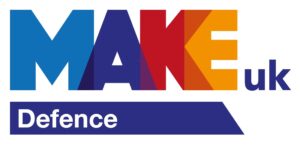Barry ET Harris MBE is a consultant for Proelium Law LLP, he is a veteran of 23 years’ service in the British Army, he combines specialist operational experience with wisdom gained from extensive commercial consulting, executive, and management expertise in his specialities gained in complex environments and high-risk jurisdictions worldwide.
CAMERA TECHNOLOGY
The key to the Thermal Imaging (TI) sensor (a camera and a lens assembly) will be the quality of the image. If the image quality is poor and unreliable, then user confidence will ebb very quickly, and the system will fail. The imaging device, the TI Camera (TIC), is required to provide Detection, Recognition, and Identification (DRI). DRI is the most critical performance criteria of a TIC in any role.
The starting point for a TIC is the sensor. It creates the imagery that can be transmitted and viewed by the user/operator. Most TIC’s are supplied with a fitted lens; often these are Dual Field of View (DFOV), Wide and Narrow (WFOV and NFOV). Some specialist suppliers do provide lenses separately.
The TIC lens is fundamentally different from that of an Electro-Optic (EO) camera. Materials such as Germanium (Ge) is used. A typical glass lens reflects thermal radiation not allowing the radiation to pass through the lenses. Other commonly used materials for a TIC lens are Chalcogenide glass, Zinc Selenide (ZnSe) and Zinc Sulfide (ZnS). TIC lenses material such as these provide transmission for wavelengths in the range of 8-15 microns (µm), i.e. LWIR (Long-Wavelength Infrared). LWIR is also called far infrared. The higher cost of these particular lenses and their complexity is one reason why TIC is costlier.
THERMAL IMAGING CAMERAS (TIC)
TIC’s were developed for use during the Korean War; TIC has slowly migrated into other fields as varied as medicine and archaeology. More recently, the lowering of prices has helped fuel the adoption of InfraRed (IR) camera technology. Highly specialised optics and sophisticated software interfaces continue to enhance the versatility of TIC, often marketed as “IR cameras”.
TIC TECHNOLOGY OVERVIEW
A TIC consists of five components: an optic system, detector, amplifier, signal processing, and display. Military TIC incorporates these elements in a heat-resistant, ruggedised, and waterproof housing. The system renders IR radiation into a visible light representation in real time. The TIC display shows IR output differentials, so two objects with the same temperature will appear to be the same “colour”. Many TIC’s use grayscales to represent standard temperature objects.
IR energy is part of the electromagnetic spectrum that encompasses radiation from gamma rays, x-rays, ultraviolet, a region visible light, IR, and microwave radio waves. These are all related and differentiated in length of their wavelength. All objects emit radiation as a function of their temperatures. Typically, the higher an object’s temperature is, the more infrared radiation as black-body radiation it emits. A TIC detects this radiation in a similar method to how a CCD camera does with visible light.
TI LENS
An optical system is required to focus infrared (IR) radiation. Critical descriptors are a focal length which will impact on the resolution and the “f” number which will affect the sensitivity. The design process is almost identical to that of an EO lens. However, there is a problem of IR material availability, very few materials are glass opaque beyond 2.7 µm, compared to hundreds of optical glass types.
Digital zoom was introduced in digital cameras to enhance their performance capabilities and can now be found in almost all TIC. Digital zoom is not “zoom”, it is just a simulation of optical zoom. A digital image is made up of thousands of pixels. When zoomed through X1, X2, X4, etc. what is taking place is the central portion of the image is electronically enlarged. However, the total number of pixels does not change, proportionally stretching the picture makes the pixels bigger, creating a zoom, but negatively leading to more reduced image quality. At greater digital zoom the picture pixelates and becomes more blocky, the ability to recognise and identify decreases.
Higher values of digital zoom factors in TIC’s are available: X8, X16 sometimes more. Unless the TIC has a very high resolution, these greater digital zoom factors create a false impression that greater detail will be observable and at more extended ranges.
The key to achieving best possible DRI results is in choosing the optimal combination of optical and digital zoom. The majority of marketed TIC have dual FOV fixed focal length and allow a variance of digital magnification.
The fundamental difference with the lens of an EO camera is that the focusing lenses cannot be made of glass, as glass prevents the transmission of long-wave IR radiation. Materials such as Germanium is used. Germanium lenses are fragile, so often have a hard coating to protect against accidental contact. The higher cost of these particular lenses is one reason why TIC is costlier.
WAVELENGTH RANGE OF IR RADIATION
- Near-IR (1.5 – 3.0 µm).
- Mid-Wave (roughly 3 – 5 µm);
- Long-Wave (8 to about 12 – 14 µm).
Images from TIC’s tend to be monochrome because the cameras are designed with only a single sensor responding to a single IR wavelength. Colour cameras require a more complex construction to differentiate wavelength and colour have less meaning outside of the visible spectrum because different wavelengths do not map uniformly into the system of colour vision used by human eyesight.
Some TIC’s can display monochromatic images in pseudo-colour. This can be useful because although humans have a much higher dynamic range in intensity detection than colour overall.
TI cameras are much more expensive than their visible-spectrum counterparts, and higher-end models are often deemed as dual-use and export restricted.
TYPES OF TIC
TIC can be divided into two categories: those with cooled IR detectors and those with uncooled IR detectors, as follows:
- Cooled TIC
Cooled TIC is typically contained in a vacuum-sealed case or flask and cryogenically cooled. This significantly increases sensitivity since their temperatures are much lower than that of the objects which they detect. Cooling temperatures commonly range from 4 °K (Kelvin)to 110 °K, 80 °K to 90 °K. Without cooling, these sensors would be ‘blinded’ by their radiation.
The drawbacks of cooled infrared cameras are that they are expensive to produce and logistically support in the field, as well as maintain and repair. Cooling and evacuating are power- and time-consuming.
The cooled TIC needs several minutes to cool down to an operating temperature before use. The system that lowers temperature and pressure is bulky and expensive; cooled TIC provides superior image quality compared to uncooled ones.
An approach to cryogenic cooling is to use high-pressure nitrogen cleaned to a very high standard. The pressurised gas is passed through a heat exchanger resulting in regenerative cooling via the Joule Thomson effect of the expanding gas cooling.
Materials used for IR detectors include liquid helium cooled silicon bolometers and a wide range of cheaper narrow gap semiconductor devices including:
- Indium Antimonide;
- Indium Arsenide;
- Mercury Cadmium Telluride;
- Lead Sulfide;
- Lead Selenide.
- Uncooled TIC
Uncooled TIC uses a sensor operating at ambient temperature or a sensor stabilised at a temperature close to ambient employing a temperature control system. Modern uncooled TIC all use sensors that function by the detection of a change of resistance, voltage or current when heated by IR radiation. The changes are measured and compared to the values at the operating temperature of the sensor. Uncooled TIC can have its temperature stabilised to reduce image noise. However, they are not cooled to low temperatures and do not require expensive cryogenic coolers. Consequently, an uncooled TIC is smaller, lighter, and costs less. However, their resolution and image quality tends to be lower than cooled TIC. Uncooled TIC is mostly based on pyroelectric and ferroelectric materials or more commonly microbolometer technology.
Shutterless operation of an uncooled TIC is a more recent, and performance-enhancing technology. It provides an uncooled TIC that operates without the use of a mechanical shutter and is, therefore, more robust. This technique has the following benefits:
- No mechanical shutter, thus stronger, and physically smaller;
- An improvement of image quality;
- Stabilised to changing ambient temperature;
- No interruption to video during Non-Uniform Correction (NUC).
The primary function of a TIC is to detect IR radiation from a target and present it as a usable image with little or no lag to the user. The performance of a detector can be determined by its ability to detect a target from an IR scene when the temperature of the target is almost the same as the background.
TIC is a critical technology for many high-performance military and space applications; they are also used in many commercial applications. In industrial purposes where performance is not the limiting factor, uncooled TIC technology is addressing new demands.
High volume usage drives down production cost and end-user prices. Uncooled TIC based on thermal detection using microbolometers resolution capabilities have steadily improved, and are now capable of detecting at ranges from a few tenths of a metre to beyond 1,000 metres. Given the rapid development, the difference between cooled and uncooled TIC will diminish, and the resolution will increase.
SUMMARY
TI is a good solution and will present imagery to the end user in a form that they are familiar with and can quickly and correctly interpret. However, cryogenically cooled TIC provides high-resolution imaging, but are expensive, and can be a logistical burden, they have a high cost of ownership, and are physically large. Uncooled Thermal Imagers provide 24-hour – all conditions coverage, with low capital cost, low cost of ownership, and relatively small power budgets.
Need advice?
If you’d like further information, or to discuss working with us, please get in touch







